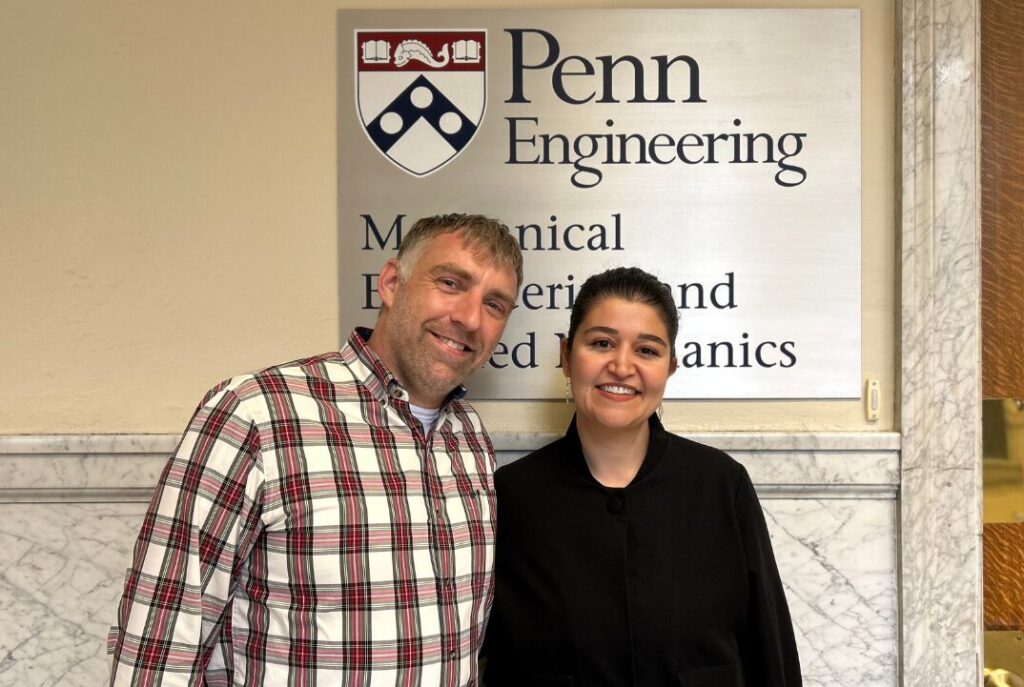
Yasaman Moharrer has successfully defended her doctoral dissertation, “The Role of YAP and TAZ in Regulating Load-induced Bone Adaptation and Osteocyte Mechanosensing,” under the guidance of Joel Boerckel, Associate Professor of Orthopaedic Surgery and MEAM Graduate Group member.
Moharrer’s research represents an advance in our understanding of skeletal mechanoadaptation. By combining pharmacological inhibition of YAP/TAZ with both prenatal ex vivo bioreactor experiments and an in vivo adult tibial loading model, she has shown that these Hippo-pathway effectors are essential for load-induced bone formation. Her work demonstrates that YAP/TAZ inhibition—via verteporfin or a TEAD autopalmitoylation inhibitor—abolishes increases in periosteal and endosteal bone formation, cortical thickness, and trabecular architecture, and also suppresses the cytoskeletal remodeling and gene regulation that underpin osteocyte mechanosensing.
In her experiments, Moharrer tackled critical challenges in modeling and measuring bone’s response to mechanical force. From optimizing dynamic histomorphometry and high-resolution osteocyte imaging to validating gene-expression responses in marrow stromal cells, she employed a rigorous combination of theoretical framing and experimental innovation. Her findings not only clarify the cellular basis of bone mechanotransduction across developmental stages but also highlight YAP and TAZ as promising therapeutic targets for skeletal fragility disorders such as osteoporosis and osteogenesis imperfecta.
Reflecting on her journey, Moharrer shares, “My PhD at MEAM and Penn has been a truly unique experience that I will never forget. It shaped me not only as a scientist but also as a person—giving me the chance to dive deeply into mechanobiology, grow within a supportive and inspiring lab environment, and learn so much from the Mechanical Engineering department. I feel very grateful for the mentorship, friendships, and opportunities that made this journey so meaningful.”
She adds, “From a scientific perspective, some of my most memorable moments were the challenging coursework and teaching assistantships I completed. Even though the material didn’t directly apply to my research, those experiences pushed me to think critically, strengthened my problem-solving skills, and gave me confidence in teaching. On a personal level, I will never forget the friendships I made here—the warmth, kindness, and support of the community left a lasting impression, and I know that spirit will stay with me no matter where I go.”
Moharrer concludes by extending heartfelt thanks “to my advisor, Joel Boerckel, for his guidance and support; to the friends and colleagues in the Boerckel Lab, the McKay Research Lab, and throughout the MEAM community—from my instructors to the MEAM office staff—who have all been so supportive; and finally to my family and friends, whose encouragement has meant everything to me.”
Looking ahead, Moharrer will explore opportunities in both academia and industry, eager to discover where she can make the greatest impact.
